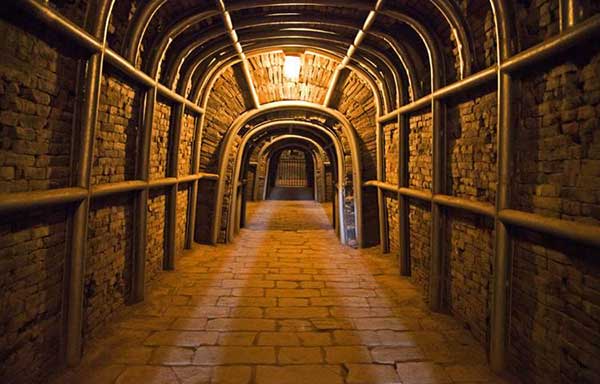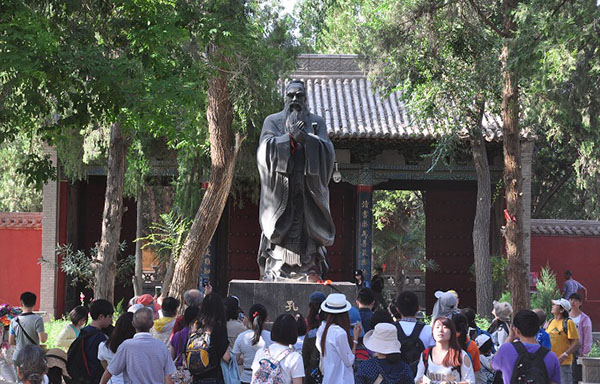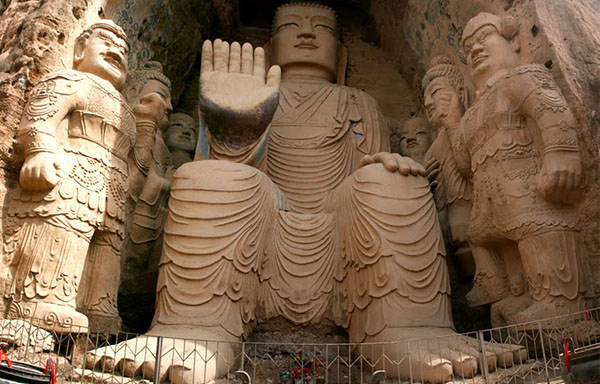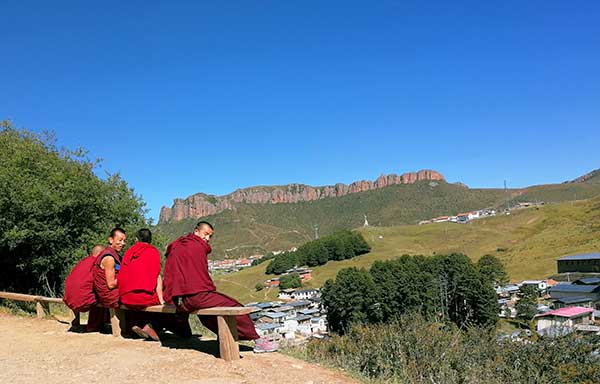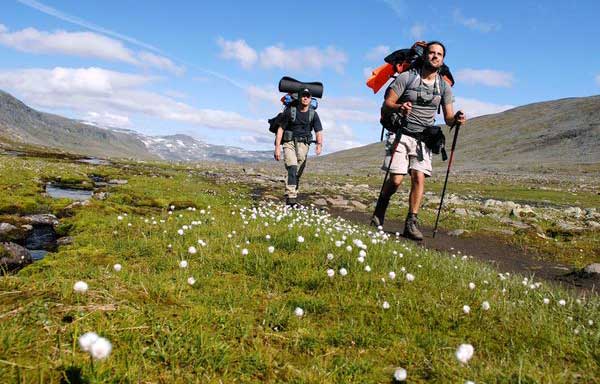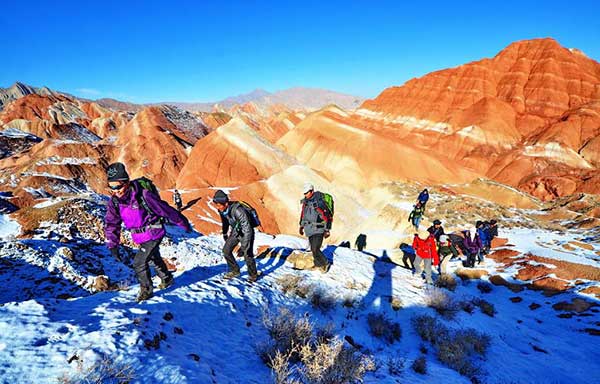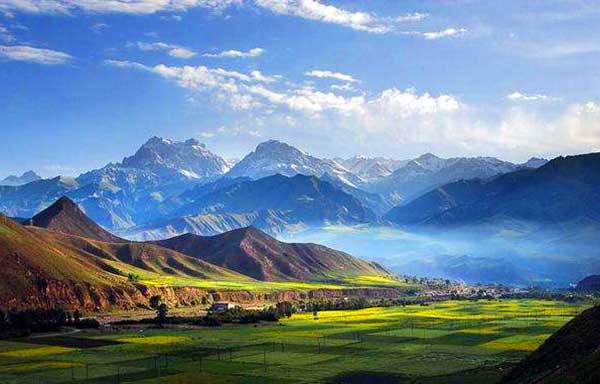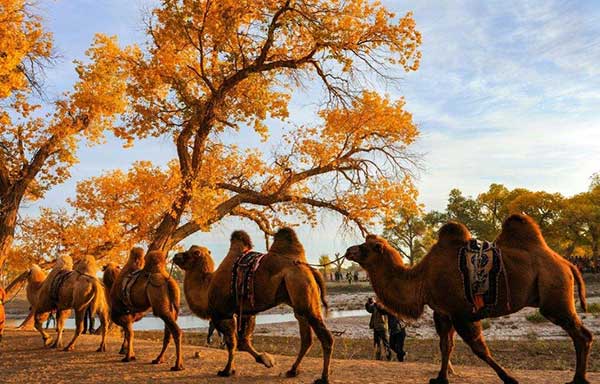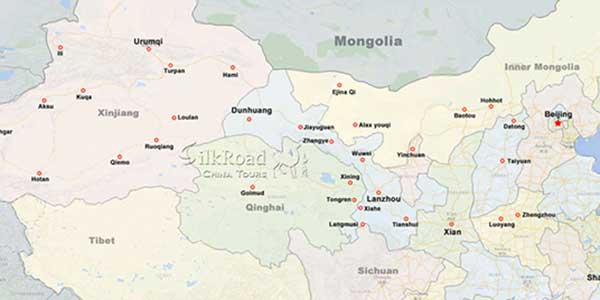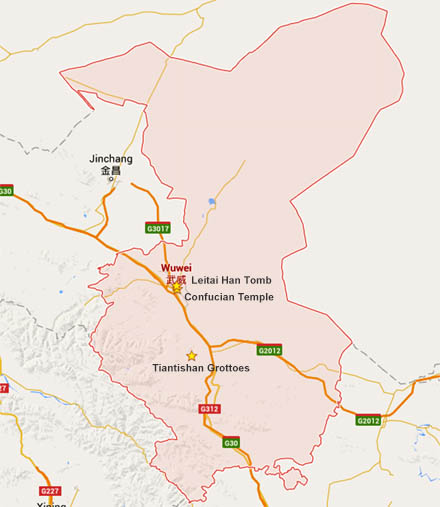 Wuwei is located in northwest central Gansu province. In the north it borders Inner Mongolia, in the southwest, Qinghai. Its central location between three western capitals, Lanzhou, Xining, and Yinchuan makes it an important business and transportation hub for the area. Because of its position along the Hexi Corridor, historically the only route from central China to western China and the rest of Central Asia, many major railroads and national highways pass through Wuwei.
Wuwei is located in northwest central Gansu province. In the north it borders Inner Mongolia, in the southwest, Qinghai. Its central location between three western capitals, Lanzhou, Xining, and Yinchuan makes it an important business and transportation hub for the area. Because of its position along the Hexi Corridor, historically the only route from central China to western China and the rest of Central Asia, many major railroads and national highways pass through Wuwei.
Wuwei's geography is dominated by three plateaus, the Loess, Tibetan, and Mongolian. Elevation can be generalized as, the south is high and the north is low, with elevations ranging from 1,020 to 4,874 metres (3,350 to 15,991 ft) above sea-level. Its area is 33,000 km2 (13,000 sq mi). Average annual temperature is 7.8 °C (46.0 °F). The climate is arid or semi-arid with rainfall between 60 to 610 mm (2.4 to 24 in). Evaporation is from 1,400 to 3,000 mm (55 to 120 in), creating a net loss of water each year. There are 2200–3000 sunlight hours each year and from 85–165 frost free days. Temperatures during summer in excess of 45.0 °C (113.0 °F) in the shade are by no means unheard of.
Southwest of Wuwei, there is a 230 metres (750 ft) thick Tianzhu Formation made of clastics intercalated with sandy shale and shale. Minerals deposits occurring in the vicinity of Wuwei include graphite, iron, titanium, and limestone.
Transportation
1. There is no civil airport in Wuwei City. The nearest airport is Lanzhou Zhongchuan Airport.
2. It is easy to take train traveling from Wuwei to other cites in China. Wuwei Railway Station is located at Chengguan Town in Wuwei City. It offers daily trains running to Lanzhou, Korla, Beijing, Jiayuguan, Urumqi, Dunhuang, Xian, Zhengzhou, Shanghai, Hangzhou, Chengdu, Chongqing, Shangqiu, Lianyungang, etc.
3. Wuwei Long-distance Bus Station is located at Nanguanxi Lu, Wuwei City. It is the hinge of passenger bus transport in Wuwei. There are buses daily traveling from Wuwei to Lanzhou, Zhangye, Tianshui, Jinchang, Jiuquan, Jiayuguan, Yumen, Dunhuang, Yinchuan, Xining, etc.
4. There are 15 public bus lines traveling around in Wuwei downtown area now. Bus 1, 2, 12 and 102 can take you to Wuwei Railway Station. Bus 1, 2, 4, 5, 7, 8, 10 and 102 can take you to the long-distance bus station.
Weather

Wuwei has a typical continental climate which is temperate, semiarid, with a frost free period of 85-165 days a year. The annually average temperature is about 7.7C (45.9F) , of which the lowest is in January with the average temperature of -13C and the highest is in July with the average temperature of 31C . The annual precipitation is 158 millimeters (6.2 inches) in Wuwei.
Attractions in Wuwei
Related Tours
General Information
Alias: LiangZhou
Area: 33,000 sq km
Location: Middle Gansu
Airport: No
Train Station: 3 km from city
Population: 1,810,000
Relevant blogs
-
How did the name of Tianshui in Gansu come about?
The name Tianshui is very pleasant to the ear, and it reminds one of that exquisitely beautiful verse, "After getting drunk, one doesn't know if the sky is in
-
The 8th Silk Road Hotel Festival was successfully
On December 27th, the "8th Silk Road Hotel Festival" grandly opened at the Yujing International Hotel in Zhangye. This hotel festival gathered industry experts,
-
The Karez Irrigation System in Turpan has been sel
On September 3rd, at the 75th Executive Council Meeting of the International Commission on Irrigation and Drainage held in Sydney, Australia, the 2024 (11th bat
-
What is the connection between "dragons" and "s
In traditional Chinese culture, the snake has a dual identity of auspiciousness and danger. Ancient people believed that the snake not only possesses divine cha
-
Endangered Przewalski's Horses Spotted at Dunhuan
<p>In early February, a group of special "visitors"—the Przewalski's horses—appeared at the Dunhuang Yumen Pass scenic area in Gansu Province, a U
-
The Fourth Dunhuang Cultural Tourism Supplier Conf
On the morning of February 18th, the Fourth Dunhuang Cultural Tourism Supplier Conference in Northwest China commenced at the Dunhuang International Convention

